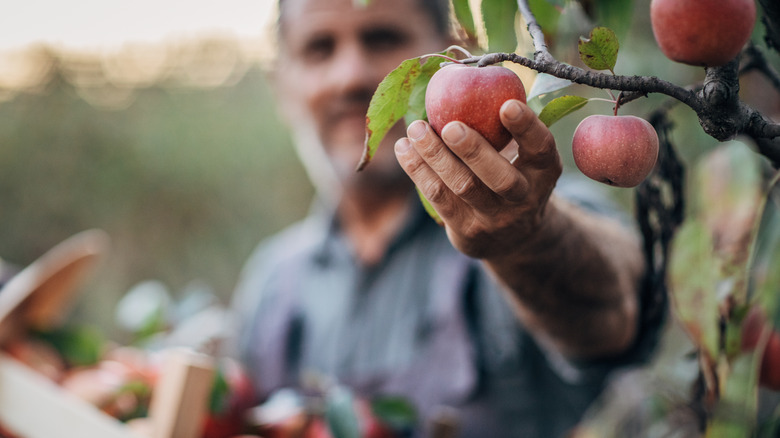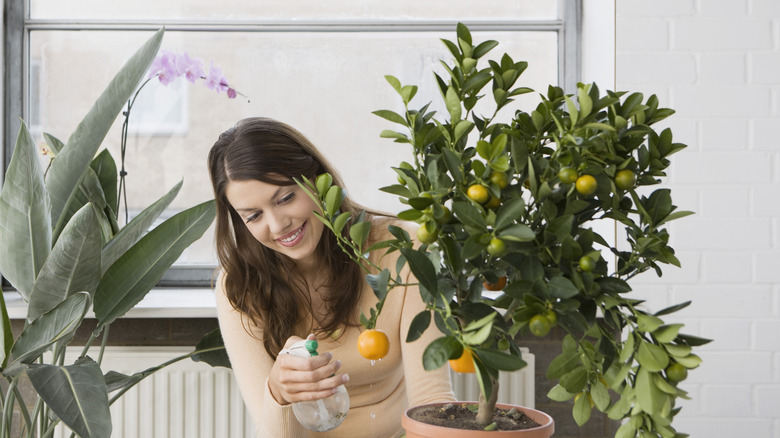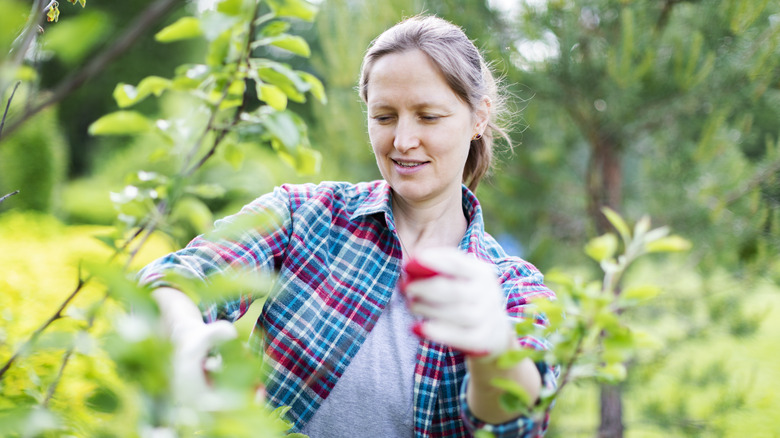This Unexpected Staple May Be The Key To Thriving Fruit Trees
Having fruit trees in your yard can be a great boon for anyone with a green thumb who also enjoys the many culinary wonders that harvesting your own fruit may provide. In order to enjoy these fruits, it's important to provide intentional care to the trees so that they are able to flourish throughout the growing season, providing proper nutrients and support to their growing produce. There are numerous contributing factors, the most important being sunlight and water so that the tree can photosynthesize. Additionally, proper soil will determine whether the tree has access to sufficient drainage, nutrients, and pH levels. For the beginning gardener, all of these considerations may seem daunting in order to harvest your own apples or pears. Fortunately, there are a few simple things you can do to help nature take its course. By adding some Borax into your watering routine, you can easily give your fruit tree a gentle boost that will help it to thrive throughout the growing season.
Borax is made from the naturally occurring minerals of boron, sodium, oxygen, and water, and can contribute significantly to your tree's health. Boron, a micronutrient, plays a vital role within plants, including cell wall formation, carbohydrate metabolism, and hormone regulation. Using Borax to fertilize your trees will help them absorb nutrients and water from the soil better, boosting cell growth and ultimately increasing the fruit yield and quality. As a result, your harvest come fall will be plentiful and your fruits will taste better.
Applying Borax to your fruit trees
Utilizing Borax to fertilize your fruit trees is a simple way to help give them a nutritional boost to produce stronger, healthier fruit. Keep in mind that different kinds of fruit trees require different levels of boron. Moreover, younger trees should receive far less than mature trees as too much boron can actually harm the tree's development. To determine how much Borax to use for your specific tree, it's a good idea to research the type of tree you have, keeping in mind its age, before you apply boron to it. You can also consult a local nursery for their advice.
Ultimately, there are two ways to apply boron to growing fruit trees. The first method is through a foliar spray. To do so, mix Borax in a spray bottle with water according to the manufacturer's instructions and the specific needs of your tree. Then throughout the growing season, you can spritz the tree with the Borax solution for direct absorption through the leaves. This process works best during the blossoming phase as the fruits will begin to form immediately after.
The second way to apply Borax is through the soil. Similarly, the amount of Borax will be determined by the type and age of your tree. You can either incorporate Borax into the soil during the planting stage or topdressing the soil throughout the growing season. Both require thorough watering to help it reach the root zone of your plants.
Cautions for using this method
Borax can be a powerful yet simple addition to your gardening routine when raising fruit trees. That being said, it should be used with caution and appropriately to ensure that it will actually benefit your trees rather than putting them in danger. One major consideration is that using too much Borax can lead to boron toxicity in the soil around your fruit trees, leading to symptoms like leaf burn, stunted growth, or even death of the tree. Before amending the soil with a product like Borax, it's important to test your soil to see if it is deficient in boron in the first place. If the levels are sufficient, adding additional boron through a Borax solution will only harm it rather than helping your fruit tree to flourish. If your soil is in need of a boost, follow the recommendations for your specific tree and test the soil again before reapplying any more.
Another thing to keep in mind is that the addition of Borax can potentially harm nearby plants and ecosystems, especially if the levels of boron in the soil are already sufficient or high. Borax can leach into the surrounding soil and waterways, affecting not only the targeted fruit trees, but also adjacent vegetation and wildlife. Moreover, it can contaminate water sources, posing risks to aquatic organisms and ecosystems, too. Be sure to use this product responsibly and consider the environments near your home that could also be impacted by its use.


